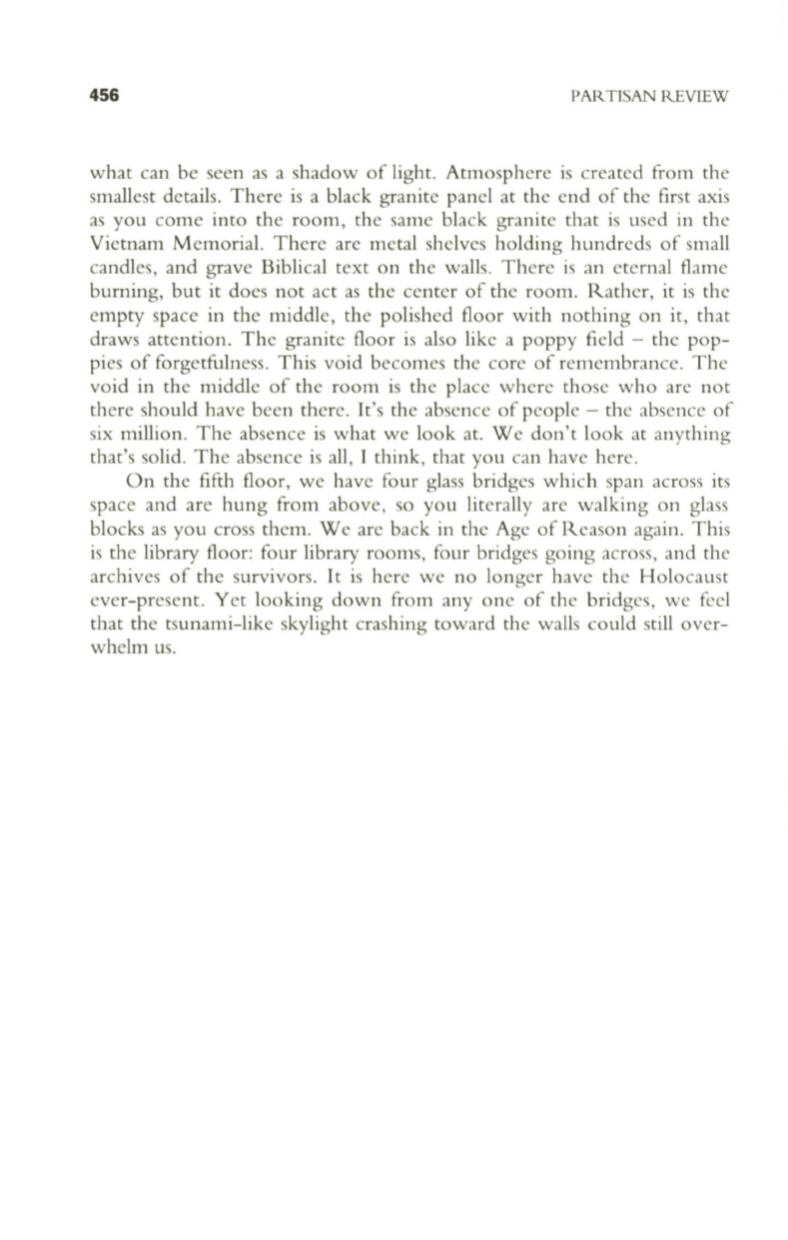
456
PARTISAN REVIEW
what can be seen as a shadow of light. Atmosphere is created from the
smallest details. There is a black granite panel at the end of the first axis
as you come into the room, the same black granite that is used in the
Vietnam Memorial. There are metal shelves holding hundreds of small
candles, and grave Biblical text on the walls. There is an eternal flame
burning, but it does not act as the center of the room. Rather, it is the
empty space in the middle, the polished floor with nothing on it, that
draws attention. The granite floor is also like a poppy field - the pop–
pies of forgetfulness. This void becomes the core of remembrance. The
void in the middle of the room is the place where those who are not
there should have been there . It's the absence of people - the absence of
six million. The absence is what we look at. We don't look at anything
that's solid. The absence is all, I think, that you can have here.
On the fifth floor, we have four glass bridges which span across its
space and are hung from above, so you literally are walking on glass
blocks as you cross them. We are back in the Age of Reason again. This
is the library floor: four library rooms, four bridges going across, and the
archives of the survivors. It is here we no longer have the Holocaust
ever-present. Yet looking down from anyone of the bridges, we feel
that the tsunami-like skylight crashing toward the walls could still over–
whelm us.


